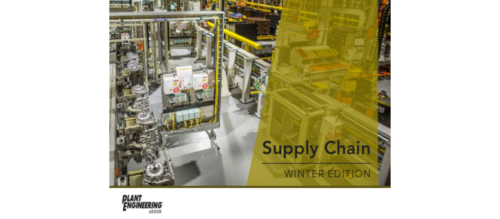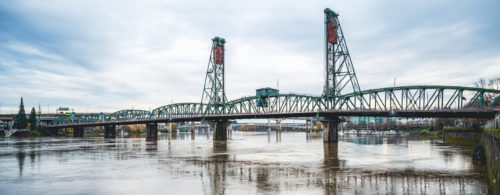How to navigate the global supply chain in 2022
Re-evaluating the process of the current supply chain and following these five initiatives will ensure a team is agile for new challenges.
When I feel my smartphone vibrating, I know it happened again; my supply chain manager is panicking due to another delay in parts resulting from an unpredictable event. Last month, a shortage of silicone and microchips caused delivery delays for thousands of components. This time a sharp increase in the price of steel halted production. With so many market uncertainties, how does one navigate through just-in-time (JIT) supply chain management, cash flow issues, and stopped deliveries?
Between 2020 and 2021, global supply chains were extensively disrupted and, in some cases, completely shut down. The pandemic revealed the delicate interconnectedness of markets from access to raw materials to the availability of a localized labor force. A total re-evaluation of supply chain strategies—beyond a local catastrophic event—is needed to support a continuous flow of materials to meet future demand. Companies are now faced with adapting their supply chain management strategies to remain competitive within the new conditions of the market.
There are five key initiatives that are worth reassessing for business in 2022. These include the total cost of ownership, strategic sourcing, building smarter factories, hunting for bottlenecks and adopting more sustainable processes. These strategies ensure a team is agile for the new challenges on the horizon.
The total cost of ownership
The total cost of ownership (TCO) measures the total sum of all costs that are associated with the activities in the supply chain. TCO provides more clarity around acquisition costs that often reflect a small portion of the total cost of ownership. An example is how one manages warranties, quality, transportation, and security.
While lowering the upfront cost-per-unit through single sourcing might seem appealing, when considering the risk factor and determine the associated requirements for each component, it can present a different story. How efficient is the production line after rigorously testing and monitoring the materials? Is there a need to conduct supplier audits for quality improvement or are there never-ending calls for after-market support? These are examples of issues that may have been manageable prior to 2020 but with the complexities of supply disruptions, quality management and exploring alternate options can result in further delays.
Strategic sourcing with supply chain
To maintain competitiveness, manufacturing supply chains must be flexible to make changes on short notice. This is a significant departure from the mindset of a traditional supply chain that focuses on reliability, consistency, and lower costs.
One of the notable trends in supply chain management is the switch from off-shore manufacturing to localized or near-shore supply. These advantages result in shorter delivery times and lower shipping costs. More importantly, it allows for better management of supply risks which includes up-front engineering and back-end support on products. Localizing the supply chain may not be the silver bullet either. Consideration of maintaining supplies through multiple sources prevents having cash locked into stock. The end goal is to have organizations efficiently respond to changes in demand so customers can receive their products faster with fewer disruptions.
Smarter factories with digitization
As an automation engineer and business owner, I’m often surprised by the number of factories that are not harnessing the power of digital analytics. Everything from supply bottlenecks, material throughput, to energy usage per unit. Having a smart factory does not necessarily mean automating the entire process with a fleet of robots but rather it can mean collecting supply orders and reviewing them against production data on a dashboard. Simple outputs also support business cases for partnerships as TCO is easy to report on.
Here are three ways to improve decision-making on supply and production lines:
- Data-driven decisions from supply to factory trends: Data-based decisions are nothing new but there is a challenge in how to use the collected data into decision-making tools. Many tools have matured and are easily accessible for collecting and presenting data in meaningful ways from multiple sources.
- Tracking and trending: There are no trends without information collected. Trends are common in production, but supply can achieve the same outcome.
- Dashboards and linked data from multiple sources: The most powerful tools are dashboards that highlight key information and data in a way that allows the supply chain manager to see when something may be an issue or if there are bottlenecks that can cause excessive cash flow.
Hunting for new bottlenecks in the supply chain
Avoid the problem of overstocking and understocking by combining supply chain data with production bottlenecks to manage the team’s workflow. To do this, consider strategic partnerships and interconnected risk reviews.
Strategic partnerships: Supply chain resilience will be a continuing theme throughout 2022 as organizations recover from the pandemic and look to prevent the same damage from happening again through partners. Having TCO in the supply chain often leads to collaborative strategic partnerships. Using periodic market analysis, a healthy business relationship can be fostered that benefits both parties.
Interconnected risk reviews: Does someone include the supply chain in their corporate risk register? How about interconnectedness as a risk factor? Interconnectedness demands careful mapping along with building strong supplier relationships so all parties can have a shared understanding of the present risk. It is important to perform regular reviews as these risks change over time.
Sustainable green initiatives
Sustainability has become a major global supply trend as customers are increasingly demanding green products and environmentally sustainable practices. To put this into context, indicators suggest that products labeled as sustainable grew in sales 5.6 times faster than products without.
These trends highlight the importance of an eco-friendly supply chain such as switching from plastic to cardboard packaging and reducing the overall size of packaging. Organizations need to be aware of their carbon footprint and move towards including sustainability into their supply chain planning to achieve carbon neutrality.
The companies that adopt sustainable practices also stand to gain more profit and customer loyalty. Reports suggest that more than 60% of customers would pay a premium for green products. With the rise of sustainable consumerism, businesses are expecting to implement more eco-friendly processes within the supply chain in the coming years.
Now the question is: how green is someone’s supply chain?
If goods are examined on how they are shipped to and from the warehouse, transportation is a major contributor to global greenhouse gas emissions. Taking any steps to reduce the impact on the environment would be a great start.
Here are four initiatives to consider:
- Moving towards a more fuel-efficient or electric fleet
- Using multiple smaller warehouses in close proximity to customers
- Using a 3PL (third-party logistics) provider that specializes in green logistics
- Consider moving to a circular supply chain principle
Organizational and corporate culture change is not an easy implementation but nevertheless, a business cannot go into 2022 without adapting to the ever-changing realities of the global supply chain. Back in the office, our production manager has much to consider about how to evolve rapidly in the face of uncertainty.
– This originally appeared on Hedgehog Technologies’ website. Hedgehog Technologies is a CFE Media content partner.
Do you have experience and expertise with the topics mentioned in this content? You should consider contributing to our CFE Media editorial team and getting the recognition you and your company deserve. Click here to start this process.





